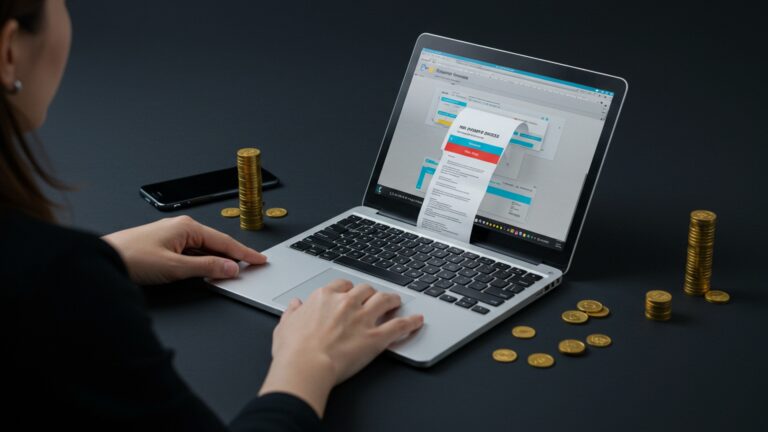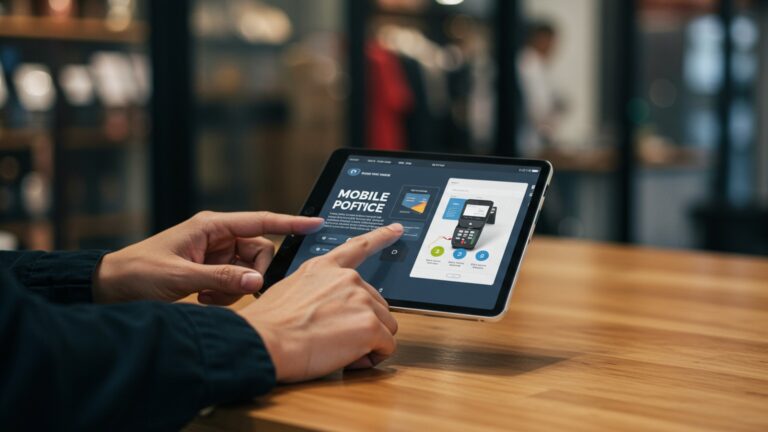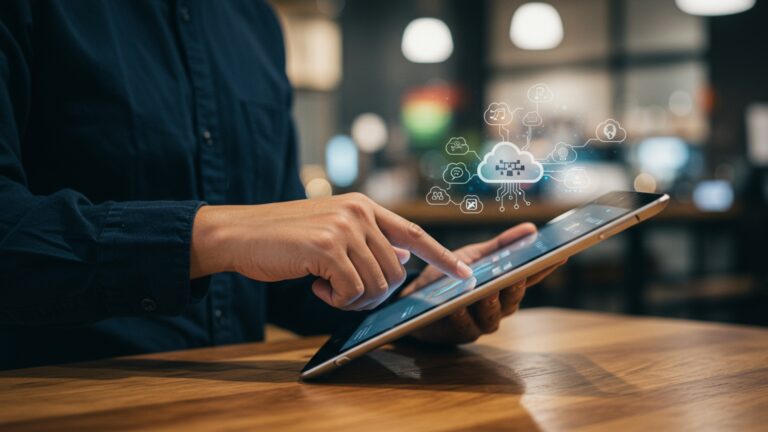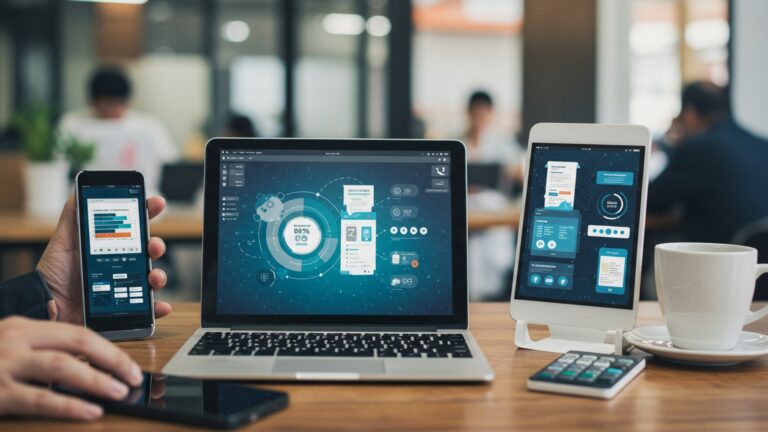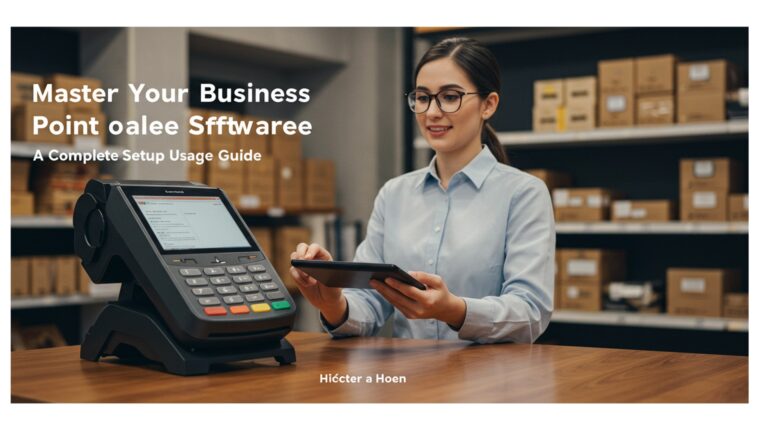Guide to Using Android POS Software for Seamless Business Transactions
In today’s dynamic commercial landscape, operational agility is paramount for businesses striving for efficiency and customer satisfaction. Legacy point-of-sale systems often hinder this progress. the advent of robust android pos software has profoundly revolutionized transaction management. These intuitive platforms empower businesses with real-time inventory management, comprehensive sales analytics. integrated customer relationship tools, moving beyond simple payment processing. Its unparalleled mobility supports diverse operations, from bustling pop-up stores to multi-branch retail environments, adapting seamlessly to various business models. Critically, it facilitates secure, swift transactions via NFC or QR codes, essential in today’s contactless economy, transforming every interaction into a data-rich experience that minimizes bottlenecks and maximizes strategic insights.
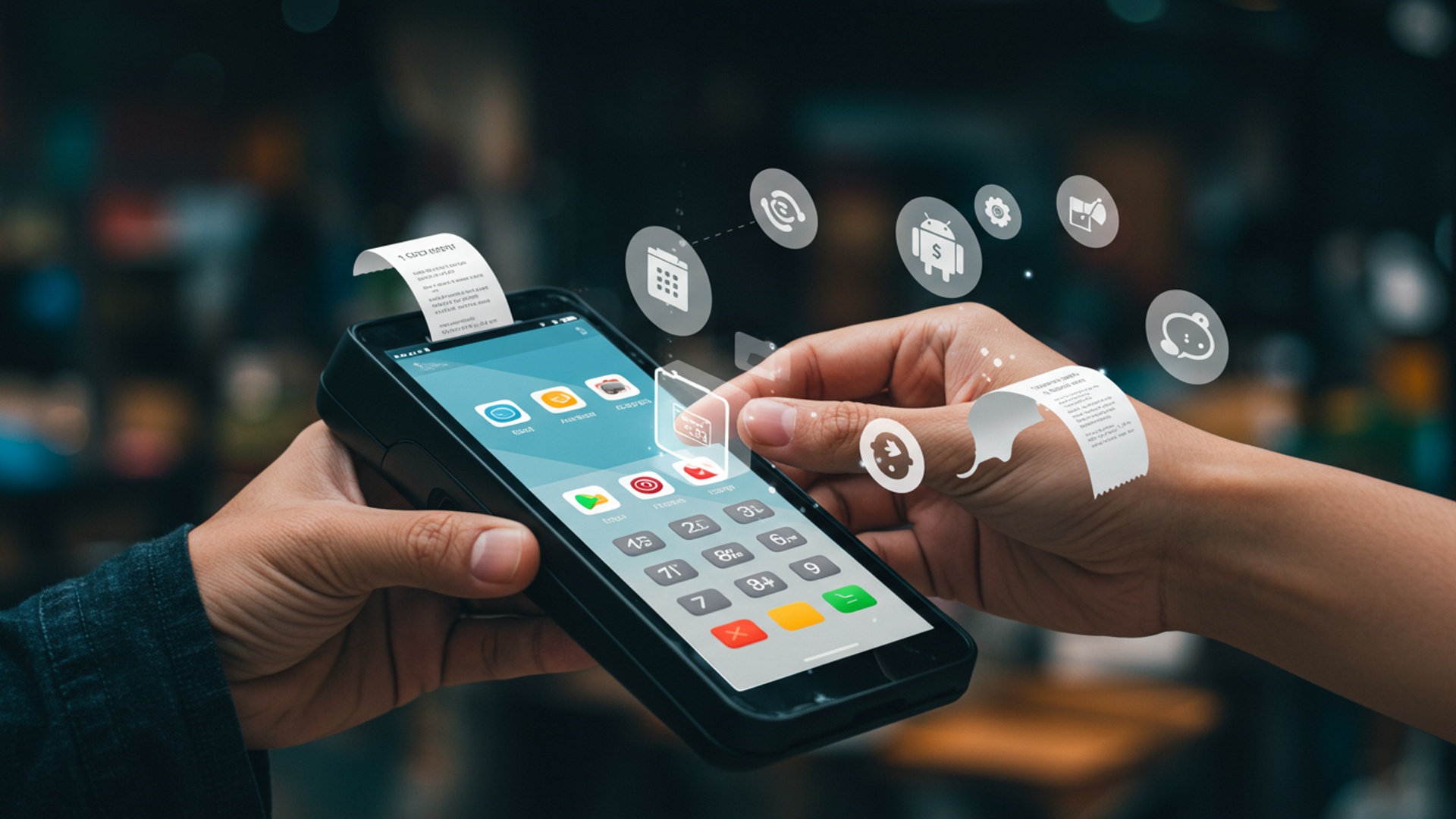
Understanding Android POS Software
In today’s fast-paced business environment, efficient transaction processing is not just a convenience; it’s a necessity. This is where Point of Sale (POS) systems come into play. increasingly, businesses are turning to solutions powered by Android. But what exactly is android pos software. why is it gaining such traction?
A POS system is the heart of any retail or service operation, serving as the central point where customers make payments for goods or services. Traditionally, these systems involved bulky, proprietary hardware and complex software. The advent of Android-based POS, But, has revolutionized this landscape.
When we talk about android pos software, we’re referring to applications designed to run on devices powered by Google’s Android operating system. This means you can transform common hardware like tablets, smartphones, or dedicated Android POS terminals into a fully functional point of sale. The “Android” aspect brings several distinct advantages:
- Accessibility
- Flexibility
- Mobility
- User-Friendly Interface
Android devices are ubiquitous and generally more affordable than specialized POS hardware.
The open-source nature of Android allows for extensive customization and integration with other business applications.
Transactions can be processed anywhere an Android device can go, ideal for pop-up shops, food trucks, or even tableside ordering in restaurants.
Most people are already familiar with the Android interface, making training for staff quicker and easier.
Let’s compare this to traditional POS systems to highlight the benefits:
| Feature | Traditional POS Systems | Android POS Software |
|---|---|---|
| Hardware Cost | High (proprietary terminals) | Lower (uses off-the-shelf Android devices or dedicated, often cheaper, Android terminals) |
| Software Licensing | Often high upfront costs, complex licenses | Typically subscription-based (SaaS), scalable. flexible |
| Mobility | Limited (fixed terminals) | High (tablets, smartphones allow transactions anywhere) |
| Ease of Use | Can have steep learning curve | Intuitive, familiar Android interface reduces training time |
| Integration | Often complex, limited to specific vendors | Easier integration with cloud-based services and APIs |
| Maintenance | Requires specialized IT support | Often managed by software provider (cloud-based updates) |
Key features typically found in robust android pos software include:
- Sales Processing
- Inventory Management
- Customer Management
- Reporting and Analytics
- Employee Management
- Offline Mode
Handling cash, credit/debit cards, mobile payments. gift cards.
Tracking stock levels, managing product variations. automating reorder points.
Storing customer data, purchase history. facilitating loyalty programs.
Generating sales reports, understanding trends. monitoring employee performance.
Setting user roles, tracking clock-in/out times. managing commissions.
Ability to process sales even without an internet connection, syncing data once online.
Understanding these foundational elements is the first step towards leveraging the power of android pos software to streamline your business operations.
Setting Up Your Android POS System
Once you interpret the benefits, the next crucial step is setting up your android pos software to ensure seamless transactions. This involves selecting the right components and configuring the system to match your specific business needs.
Hardware Requirements
While Android offers flexibility, certain hardware components are essential for a complete POS setup:
- Android Device
- Receipt Printer
- Barcode Scanner
- Cash Drawer
- Card Reader
A tablet (8-10 inches is common) or a dedicated Android POS terminal. Smartphones can work for very small, mobile operations. tablets offer a better user experience for staff.
Thermal printers are popular for their speed and low maintenance. Ensure it’s compatible via Bluetooth, Wi-Fi, or USB with your Android device.
For retail businesses, a scanner speeds up checkout. Options include handheld Bluetooth scanners, USB scanners (with an OTG adapter for tablets), or even using the device’s camera for basic scanning.
An essential for cash transactions, often triggered open by the receipt printer.
Crucial for accepting credit and debit cards. These can be integrated terminals, Bluetooth readers, or dongles that connect via the audio jack or USB-C. Look for EMV chip card and NFC (tap-to-pay) compatibility.
Choosing the Right Android POS Software
This is arguably the most critical decision. The market offers a wide array of android pos software options, each with different features, pricing models. target industries. Consider the following when making your choice:
- Industry Specificity
- Scalability
- Features
- Pricing Model
- Support
- Integrations
Do you need features tailored for retail, restaurants, salons, or mobile services?
Can the software grow with your business? Does it support multiple locations or more users easily?
Does it include essential inventory, reporting. customer management tools?
Is it a monthly subscription, an annual fee, or transaction-based? grasp the total cost of ownership.
What kind of customer support is available (24/7, email, phone)?
Does it integrate with your existing accounting software, e-commerce platform, or CRM?
Many providers offer free trials, which are invaluable for testing the software in your actual business environment before committing.
Installation and Initial Configuration
Once you’ve chosen your android pos software, installation is typically straightforward:
- Download the App
- Create an Account
- Connect Peripherals
- Configure Settings
- Tax Rates
- Payment Types
- Receipt Options
Most software is available as an app on the Google Play Store.
Follow the on-screen prompts to set up your business account.
Pair your receipt printer, barcode scanner. card reader via Bluetooth, Wi-Fi, or USB. Each software will have specific instructions for this.
Set up local, state. federal tax rates that apply to your products/services.
Enable cash, credit card, gift card. mobile payment options.
Customize your receipts with your logo, business details. return policies.
Inventory Management Setup
Effective inventory management is key to profitability. With android pos software, this usually involves:
- Product Entry
- Category Organization
- Stock Levels
- Variants
Manually input products, including name, description, price, SKU. barcode. Many systems allow bulk import via CSV files.
Group products into logical categories (e. g. , “Apparel,” “Beverages,” “Services”) for easier navigation and reporting.
Enter initial stock counts. Configure low-stock alerts to prompt reordering.
If applicable, set up product variants (e. g. , “T-shirt – Small, Blue” or “Coffee – Latte, Large”).
Before launching, conduct a thorough test run. Process a few mock transactions, including returns, to ensure all hardware is communicating correctly and the software is configured as expected. This proactive step can save you significant headaches during peak business hours.
Core Functions and Daily Operations
With your android pos software system set up, it’s time to dive into the daily operations that empower your business to run smoothly. The core functions of these systems are designed to simplify sales, manage transactions. track key business metrics.
Processing Sales: Cash, Card. Mobile Payments
The primary function of any POS system is to process customer purchases. Android POS software makes this intuitive:
- Adding Items
- Applying Discounts
- Accepting Payments
- Cash
- Credit/Debit Cards
- Mobile Payments
- Gift Cards
- Receipts
Staff can quickly add items to a customer’s cart by tapping on product images/names, using a barcode scanner, or manually searching for products.
Easily apply percentage-based or fixed-amount discounts to individual items or the entire sale.
Input the cash tendered. the software calculates change due. The cash drawer usually pops open automatically.
Integrate with an EMV/NFC card reader. The customer can tap, insert, or swipe their card. The android pos software communicates with the payment processor to authorize the transaction.
Many modern systems support NFC-based mobile wallets like Google Pay or Apple Pay, allowing customers to simply tap their phone.
Process pre-loaded gift cards, often integrated directly with the POS system.
Offer customers the choice of printed, emailed, or SMS receipts.
// Example of a simplified sales processing flow (pseudo-code)
function processSale(cart, paymentMethod, amountTendered) { let total = calculateCartTotal(cart); applyDiscounts(cart); if (paymentMethod === "Cash") { if (amountTendered < total) { displayError("Insufficient cash provided.") ; return false; } let change = amountTendered - total; openCashDrawer(); printReceipt(cart, total, amountTendered, change); } else if (paymentMethod === "Card") { sendToCardReader(total); if (cardReader. transactionApproved()) { printReceipt(cart, total, "Card"); } else { displayError("Card transaction declined.") ; return false; } } else if (paymentMethod === "MobilePay") { sendToNFCReader(total); if (nfcReader. transactionApproved()) { printReceipt(cart, total, "Mobile Pay"); } else { displayError("Mobile payment declined.") ; return false; } } updateInventory(cart); logSale(cart, total, paymentMethod); return true;
}
Managing Returns and Exchanges
Customer satisfaction often hinges on a smooth return or exchange process. Android POS software simplifies this:
- Lookup Sales
- Process Refunds
- Handle Exchanges
Easily find past transactions using receipt numbers, customer names, or dates.
Select items to be returned. the system can process a refund back to the original payment method or issue store credit.
Process a return for the old item and a new sale for the exchanged item, calculating any price difference.
Employee Management and Access Control
Effective employee management is built into most android pos software:
- User Accounts
- Role-Based Permissions
- Time Tracking
- Performance Monitoring
Create individual accounts for each employee with unique PINs or passwords.
Assign roles (e. g. , cashier, manager, owner) to control access to sensitive functions like refunds, discounts, or report viewing.
Allow employees to clock in and out directly from the POS terminal, simplifying payroll.
Track individual sales performance, average transaction values. other metrics.
Reporting and Analytics
Beyond transactions, one of the most powerful aspects of android pos software is its ability to generate insightful reports. These reports are crucial for making informed business decisions:
- Sales Reports
- Inventory Reports
- Customer Reports
- Labor Reports
Daily, weekly, monthly, or custom date range sales data, broken down by product, category, payment type, or employee.
Track best-sellers, slow-moving items, stock levels. potential shrinkage.
Identify top customers, track purchase frequency. review loyalty program effectiveness.
Monitor employee hours and sales performance against labor costs.
Imagine a small coffee shop owner using their android pos software. By reviewing daily sales reports, they notice that oat milk lattes consistently outsell almond milk lattes by a significant margin on weekdays. This actionable insight allows them to adjust their ordering, ensuring they always have enough oat milk in stock while reducing waste from less popular alternatives. This direct feedback loop from POS data to operational adjustments is a hallmark of modern business efficiency.
Advanced Features and Optimizations
While core transaction processing is fundamental, modern android pos software extends far beyond basic sales, offering advanced features that can significantly optimize business operations, enhance customer relationships. drive growth. Leveraging these capabilities can transform your business from merely transactional to truly strategic.
Customer Relationship Management (CRM) Integration
Many advanced android pos software solutions offer built-in CRM functionalities or seamless integration with dedicated CRM platforms. This allows businesses to:
- Capture Customer Data
- Track Purchase History
- Personalized Marketing
Collect customer names, contact details, birthdates. preferences at the point of sale.
View a customer’s entire purchase history, helping staff provide personalized recommendations.
Use collected data to segment customers and send targeted promotions, birthday discounts, or new product announcements.
For example, a boutique clothing store using android pos software can quickly identify a customer’s preferred brands or sizes based on past purchases, leading to a more tailored and satisfying shopping experience.
Loyalty Programs
Implementing a loyalty program directly through your android pos software is an excellent way to encourage repeat business. Common features include:
- Points Systems
- Tiered Rewards
- Digital Punch Cards
Customers earn points for every purchase, redeemable for discounts or free items.
Offer different levels of rewards based on spending, encouraging higher engagement.
Replace physical punch cards with a digital equivalent, easily tracked within the POS.
A restaurant might offer a “buy 9 coffees, get the 10th free” program managed entirely by their android pos software, automatically tracking customer purchases and applying the discount when earned.
E-commerce Synchronization
For businesses with both a physical storefront and an online presence, synchronizing inventory and sales data is critical. Advanced android pos software can:
- Real-Time Inventory Updates
- Unified Product Catalog
- Centralized Customer Data
When an item sells in-store, its stock level is immediately updated online, preventing overselling. Conversely, online sales update in-store inventory.
Manage all product data (descriptions, prices, images) from a single source, pushing updates to both POS and e-commerce platforms.
Maintain a single customer database, allowing loyalty points earned online to be redeemed in-store. vice-versa.
This integration is vital for omnichannel retailers who aim to provide a consistent brand experience across all touchpoints.
Multi-Location Management
As businesses expand, managing multiple locations becomes complex. Android POS software designed for scalability can:
- Centralized Reporting
- Shared Inventory
- Consistent Pricing and Promotions
View consolidated sales data, inventory levels. employee performance across all stores from a single dashboard.
Track inventory movement between locations and fulfill orders from the most efficient store.
Ensure uniform pricing and promotional offers across all branches.
A chain of juice bars, for instance, can monitor the performance of each individual store and compare sales trends using a single android pos software system, allowing them to optimize staffing and stock levels based on location-specific demand.
Security Best Practices for Android POS Software
While convenient, using android pos software requires attention to security to protect sensitive business and customer data:
- Strong Passwords and PINs
- Role-Based Access
- Regular Updates
- Data Encryption
- Secure Network
- Physical Security
- PCI DSS Compliance
Enforce complex passwords for administrative access and unique PINs for staff.
Limit staff access to only the functions necessary for their job roles.
Keep the Android operating system and the POS app updated to patch security vulnerabilities.
Ensure your chosen android pos software encrypts sensitive data, especially payment insights, both in transit and at rest.
Use a secure Wi-Fi network (WPA2/WPA3) and consider a separate network for POS devices if possible.
Secure your Android devices to prevent theft, which could compromise data.
Ensure your payment processor and POS software are compliant with Payment Card Industry Data Security Standard (PCI DSS) regulations.
By implementing these advanced features and adhering to security best practices, businesses can not only streamline transactions but also build stronger customer relationships, expand their reach. operate with greater confidence and efficiency.
Real-World Applications and Case Studies
The versatility of android pos software makes it suitable for a wide array of business types, from small pop-up shops to multi-location enterprises. Understanding real-world applications helps illustrate its practical benefits and actionable takeaways.
Small Retail Boutique
“Chic Threads,” a boutique selling unique apparel and accessories, used to rely on a traditional cash register and manual inventory tracking.
They adopted an android pos software solution running on a 10-inch Samsung tablet, paired with a Bluetooth receipt printer and a small card reader. They spent an afternoon entering their initial product catalog and setting up categories like “Dresses,” “Jewelry,” and “Handbags.”
- Faster Checkout
- Accurate Inventory
- Customer Insights
- Mobility
Barcode scanning and tap-to-pay functionality significantly reduced transaction times.
Real-time inventory updates helped them identify best-sellers and reorder popular items before stock ran out, reducing lost sales. They also used the software’s reporting to spot slow-moving items for clearance.
By optionally collecting customer emails at checkout, they could send targeted promotions for new arrivals, leading to a 15% increase in repeat customer visits.
During sidewalk sales or local craft fairs, they could easily take their tablet and card reader, processing sales on the go without missing a beat.
Even small businesses can gain significant operational efficiencies and deeper customer understanding by transitioning to android pos software. The initial setup time is a worthwhile investment for long-term benefits.
Coffee Shop/Restaurant
“The Daily Grind,” a bustling coffee shop with a small menu of pastries and sandwiches, faced challenges with order accuracy and speed during peak hours.
They deployed an android pos software specifically designed for food service, running on dedicated Android terminals at the counter. They also introduced a mobile tablet for tableside ordering for their limited seating area.
- Improved Order Accuracy
- Increased Throughput
- Menu Flexibility
- Staff Efficiency
Digital orders sent directly to the kitchen display system (KDS) or printer eliminated handwriting errors and miscommunications.
Faster order entry and payment processing meant shorter queues during the morning rush, serving more customers.
Easily update daily specials, temporary price changes, or out-of-stock items across all POS terminals in real-time.
Baristas could focus more on drink preparation and less on manual calculations. The tableside ordering tablet allowed servers to input orders directly, speeding up service.
For food service, android pos software with KDS integration can dramatically improve operational flow, reduce errors. enhance the customer experience, particularly during high-volume periods.
Mobile Service Provider (e. g. , HVAC Technician, Handyman)
“Fix-It-Right,” a one-person HVAC repair service, used to invoice customers manually and accept only cash or checks on-site, leading to delayed payments.
The technician started using an android pos software app on his smartphone, paired with a compact Bluetooth card reader. He created a service catalog with common repair items and labor rates.
- Instant Invoicing
- Immediate Payments
- Digital Records
- Professionalism
He could generate professional invoices on the spot, itemizing parts and labor.
Accepting credit card payments on-site drastically reduced the time to get paid, improving cash flow.
All transactions were digitally recorded, simplifying bookkeeping and tax preparation. He no longer had to manually reconcile payments later.
Presenting digital invoices and accepting card payments on a smartphone projected a modern, professional image to clients.
Mobile-first businesses can leverage android pos software to professionalize their operations, accelerate payment collection. streamline administrative tasks, all from the palm of their hand.
These examples underscore that android pos software is not a one-size-fits-all solution. a versatile tool adaptable to diverse business models. The key is to select a solution that aligns with your specific operational needs and to fully utilize its features to unlock greater efficiency and profitability.
Conclusion
Mastering Android POS software isn’t just about installation; it’s about unlocking a new level of operational agility for your business. I’ve personally witnessed how a small cafe transformed its service, transitioning from clunky cash registers to a sleek tablet system, dramatically reducing queue times during peak hours. The real power lies in leveraging its inherent mobile flexibility – imagine processing a sale on the shop floor, or even at a bustling pop-up market, without missing a beat. My personal tip? Regularly explore new feature updates; for instance, many modern Android POS systems now integrate seamlessly with popular payment gateways and offer real-time inventory alerts, a crucial trend driven by the demand for instant data. Don’t just use it; optimize it by thoroughly training your team and customizing workflows to your unique business rhythm. Embrace this technology not merely as a tool. as a strategic advantage that empowers you to deliver exceptional customer experiences and drive sustainable growth.
More Articles
Master Android POS Software How to Transform Your Mobile Device into a Sales Hub
Unlock Sales Power How to Use Mobile POS Software on the Go
Your Ultimate Guide How to Select the Right POS Software for Small Businesses
How to Choose the Best Cloud Based POS Software for Your Growing Business
Learn How to Streamline Billing and POS Software for Seamless Business Operations
FAQs
What exactly is Android POS software?
Android POS software transforms your regular Android phone or tablet into a full-fledged point-of-sale system. It lets you process sales, manage inventory, track customer insights. handle various payment types, all from a portable and often budget-friendly device.
Why should my business switch to an Android POS system?
There are quite a few perks! Android POS systems are usually more affordable than traditional setups because they can run on hardware you might already own. They offer great mobility, perfect for pop-up shops or busy cafes. often come with intuitive interfaces. Plus, with cloud integration, you get real-time data and can manage your business from anywhere.
What types of businesses benefit most from this kind of software?
Pretty much any small to medium-sized business that needs flexibility and efficiency can benefit. We’re talking retail stores, restaurants, coffee shops, food trucks, salons. service providers. If you need to process transactions on the go or want a cost-effective system, it’s a great fit.
Is it difficult to get started with Android POS software?
Not at all! Most Android POS solutions are designed to be user-friendly. You typically just download an app, set up your products and prices, connect any necessary hardware like a card reader. you’re good to go. It’s often much simpler and quicker than installing traditional POS systems.
How does an Android POS system handle payments and keep them secure?
These systems support various payment methods, from credit and debit cards to mobile payments and cash. For security, they usually employ encryption for all transactions, comply with industry standards like PCI DSS. often use tokenization to protect sensitive cardholder data. Your payments are processed through secure gateways.
Can I manage my inventory using this software?
Absolutely! A key feature of good Android POS software is robust inventory management. You can track stock levels in real time, set up low-stock alerts, manage product variations. even handle inventory across multiple locations. This helps prevent stockouts and makes ordering much more efficient.
What happens if my internet connection isn’t always reliable?
Many Android POS systems offer an ‘offline mode’ feature. This means you can continue processing transactions even without an internet connection. The system stores all the sales data locally on the device and then automatically syncs everything to the cloud once your internet connection is restored, so your business doesn’t skip a beat.

